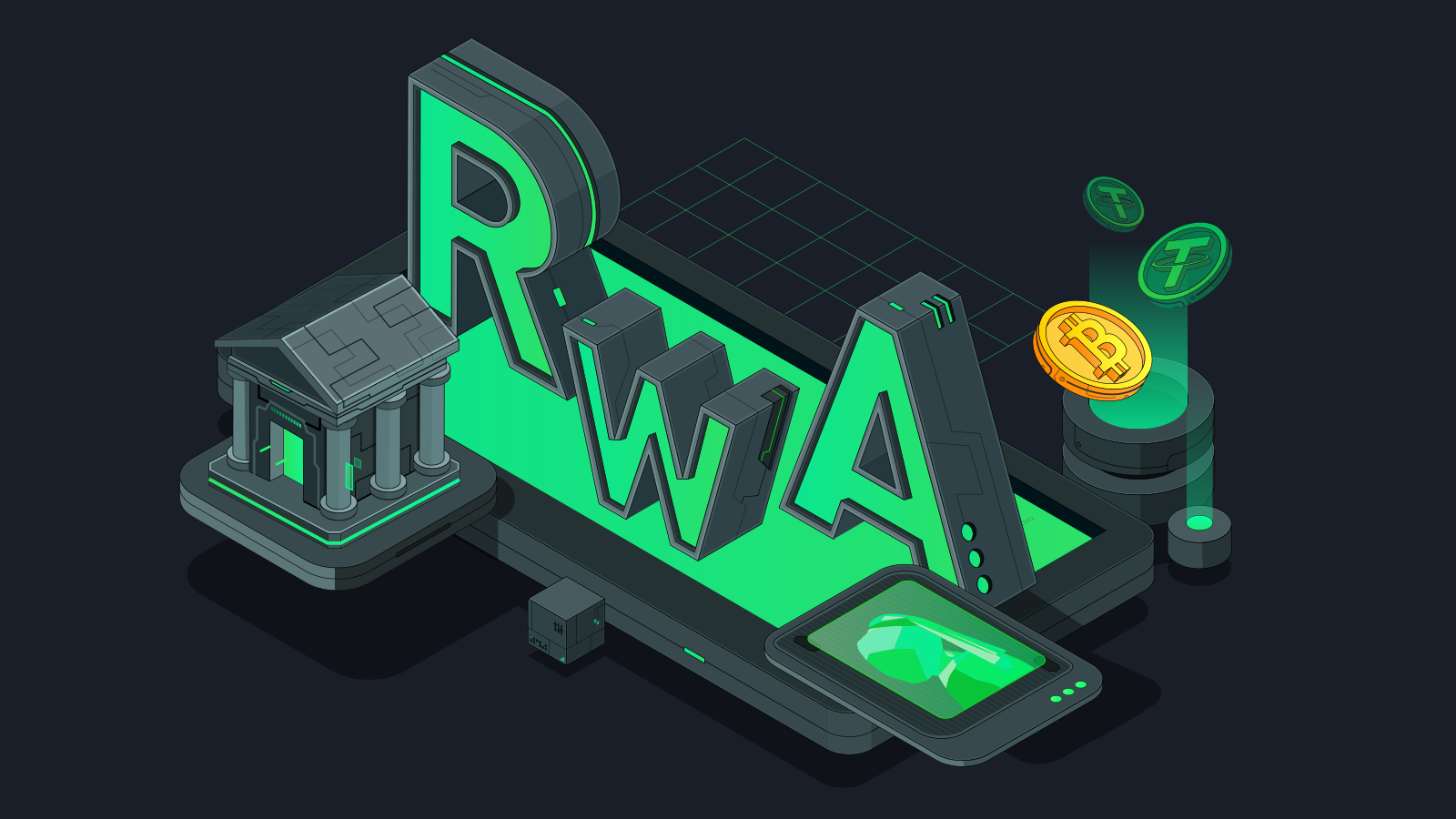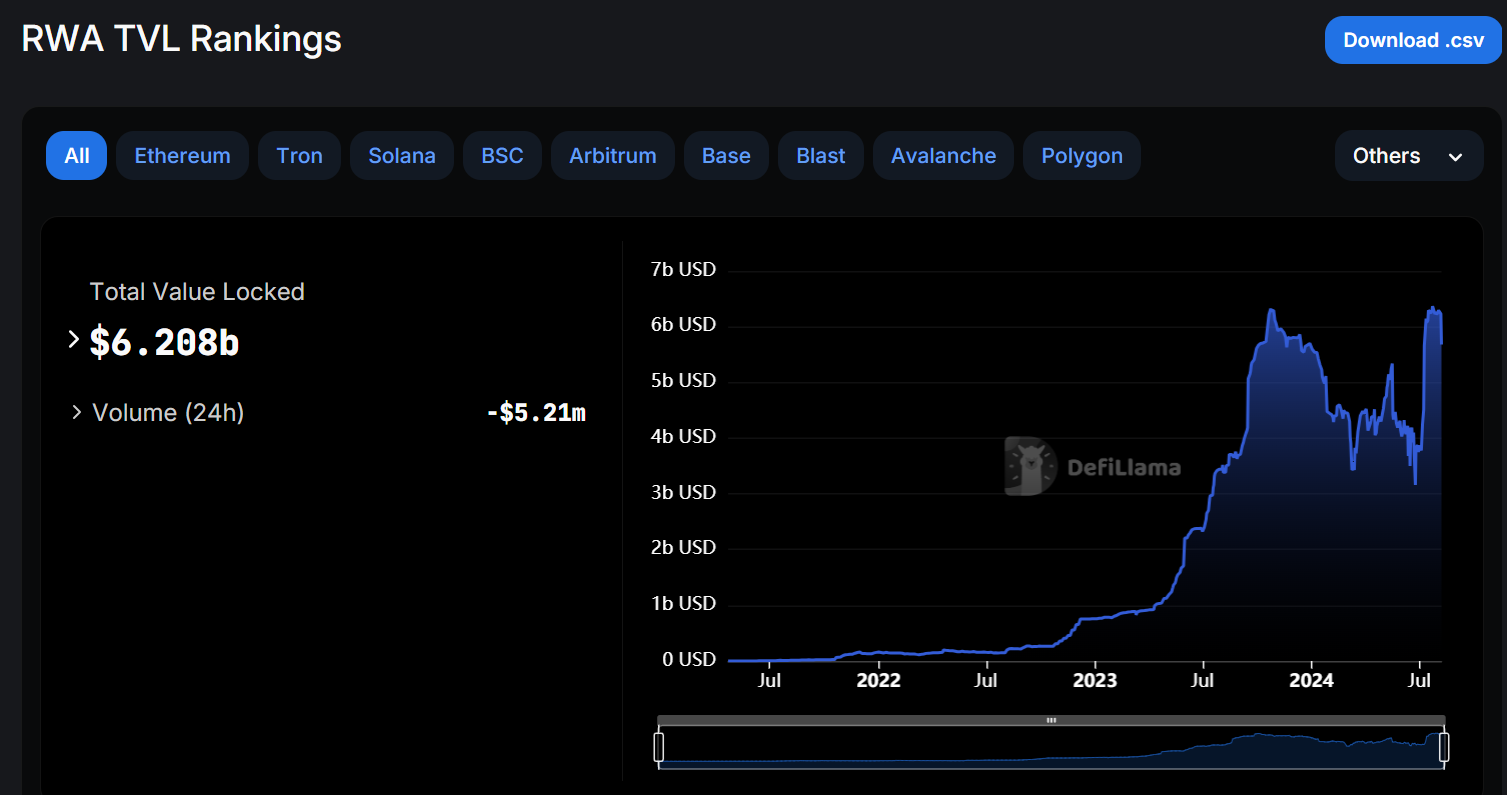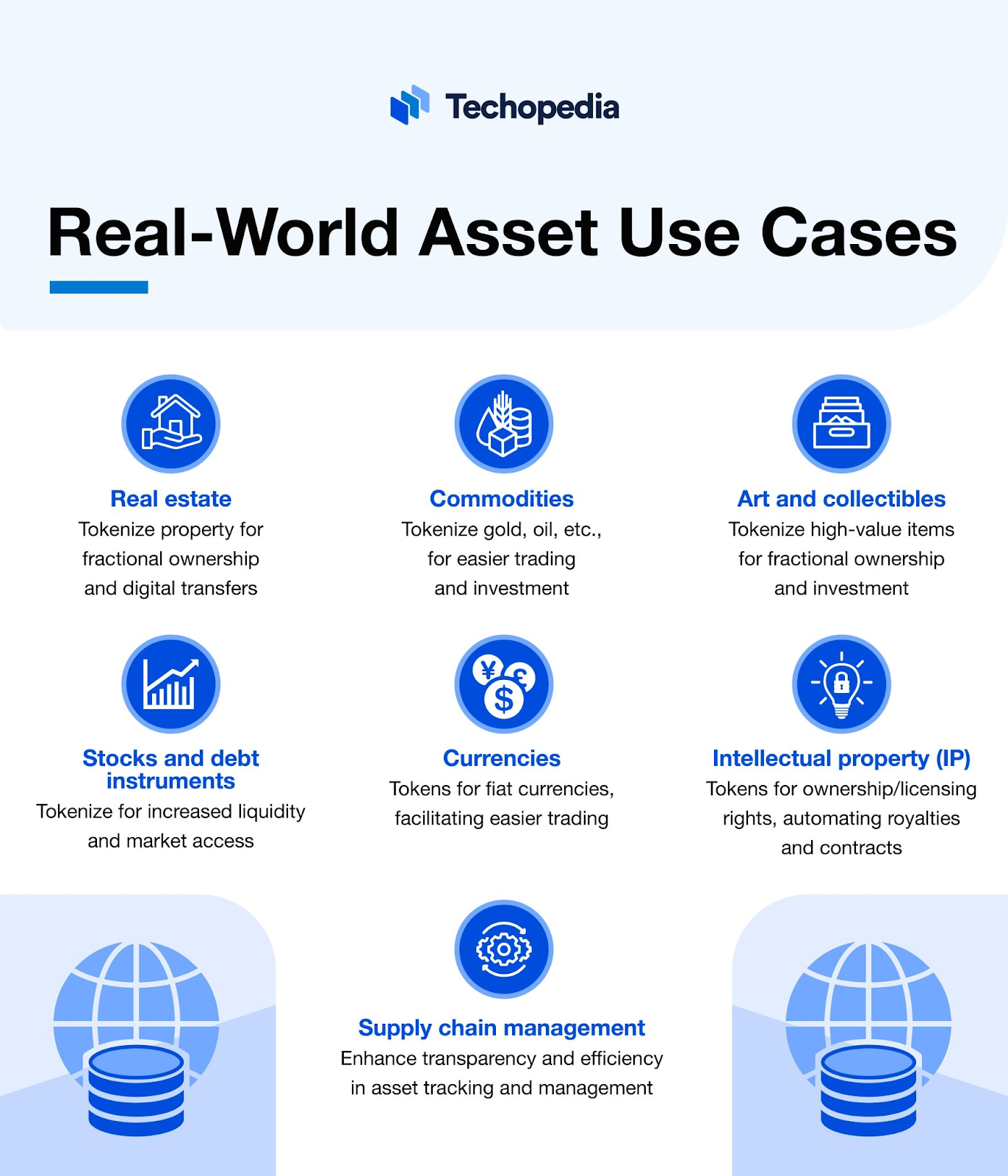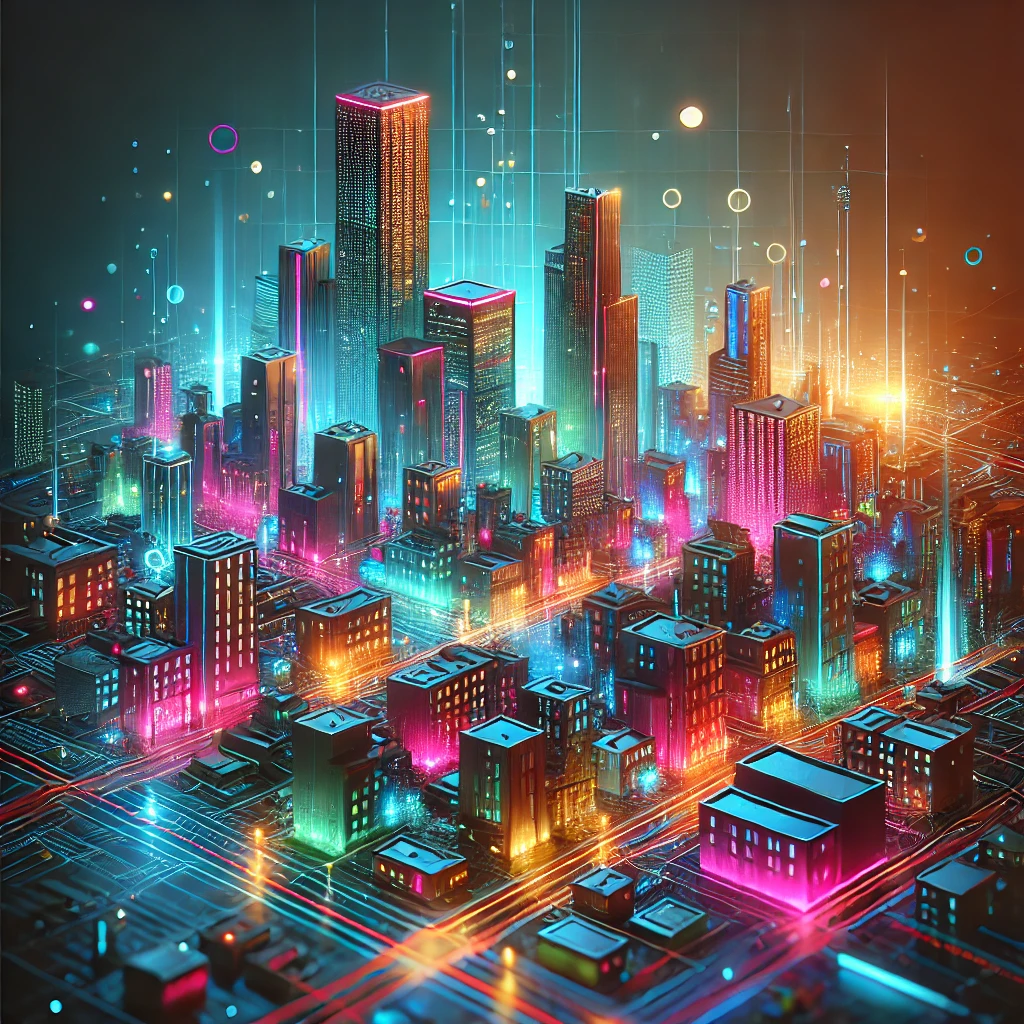
Real World Assets (RWAs) are becoming increasingly significant in crypto. They are expanding what can be tokenised and traded on the blockchain, bridging the gap between traditional finance and DeFi.
Imagine easily getting a property without the hassle of a middleman, or at the very least owning units/ fractions of real-world assets which can be traded on exchanges similar to how people own and trade shares of a public company.

These are just a few of the prospects RWAs open to crypto natives. Coinmarketcap places the total market cap of RWA tokens at $27.33B and the total value locked (TVL) of RWA via DeFilama is currently $6.20B skyrocketing from a low of $35,000 in April 2021.
This article will examine the meaning of real-world assets, explore how these assets are tokenized, and discuss their importance and various uses
What are Real World Assets?
Real World Assets (RWAs) in crypto refer to the tokenisation of tangible physical assets and capital market products. Tokenisation means representing these assets on the blockchain. This allows these assets to be brought onto the blockchain and offered to retail customers.
A wide range of assets can be tokenised from everyday items like real estate, artwork, and commodities such as gold to traditional financial instruments such as treasury bonds, etc., into tradable tokens on the blockchain.
Through tokenisation, traditionally illiquid assets become divisible, tradable, easily transferable, and accessible to a global audience, making them ideal for fractional ownership and trading on decentralised platforms thus creating a new category in crypto known as Real World Assets (RWAs).
The Process of Tokenising Real Word Assets
Assets in Real-World Assets (RWA) are tokenised and represented on the blockchain through the following process:
- Asset Identification: Determining which real-world assets (like real estate, art, or commodities) will be suitable for tokenisation.
- Legal Structuring: Establish the appropriate legal framework to ensure regulatory approval This involves compliance with local regulations and Know Your Customer (KYC) and Anti-Money Laundering (AML) procedures
- Asset Valuation: Assess the value of the asset to determine how many tokens to issue and what each token will represent and establish asset ownership verification.
- Token Creation: This involves selecting a blockchain to mint and issue the token on.
- Token Distribution: Distribute the tokens to investors or buyers, either through direct sales, Initial Coin Offerings (ICO), or Security Token Offerings (STO).
- Secondary Market Trading: Here tokens are listed and trading of tokens starts on secondary markets or exchanges, allowing for speculation and market price discovery.
Importance and Use Cases of Real World Assets

- Risk Mitigation: Integrating traditional assets with crypto can make for a more robust and balanced portfolio, reducing the overall risk by spreading investments across different asset classes.
- Eliminate Liquidity Issues and Access Challenges: Access to traditional assets is often limited by high entry barriers, regulatory and geographic restrictions, and liquidity issues.
RWAs leverage technology to lower entry barriers, and geographic restrictions, and improve liquidity, making them more accessible to a wider range of investors as these assets are no longer sold as a whole but as fractions and units in the form of tokens. - Lending and Borrowing Platforms: One prominent use case for real-world assets (RWAs) in the crypto space is in lending and borrowing platforms.
These platforms allow users to use their tokenised real-world assets as collateral.
Borrowers receive stablecoins or other tokens while lenders earn interest on their holdings.
Closing Thoughts
Tokenised Real World Assets (RWAs) represent an innovation in the financial and investment landscape. Although the regulatory environment for tokenised assets is still evolving, real-world assets can play a significant role in shaping the future of finance.
This space will be exciting to watch as traditional finance (TradFi) becomes increasingly receptive and accepting of decentralised finance (DeFi), as evidenced by the approval of Bitcoin and Ethereum ETFs by the Securities and Exchange Commission.
[Author’s Note: This article does not represent financial advice, everything written here is strictly for educational and informational purposes. Please do your own research before investing.]
Author: Godwin Okhaifo
Also Read: What are Atomic Swaps?



